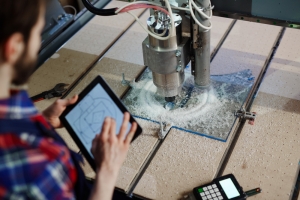please click here:
https://www.shdtimber.com/products.html
Okoume wood, scientifically known as Aucoumea klaineana, is a tropical hardwood native to the rainforests of West and Central Africa, particularly Gabon. It is highly valued in the woodworking and construction industries due to its light weight, attractive pinkish hue, and ease of workability. Despite being softer than many traditional hardwoods, Okoume has become a favorite material for marine plywood, furniture, interior design, and even musical instruments. This comprehensive guide explores the properties, uses, advantages, and considerations of Okoume wood, as well as comparisons with other commonly used woods.
Origins and Natural Habitat
Okoume trees thrive in the tropical rainforests of Gabon, Equatorial Guinea, and surrounding regions. They grow to impressive heights of up to 50 meters and provide large, straight trunks ideal for veneer and plywood production. Okoume's availability has made it one of the most exported hardwoods from Central Africa. Sustainable harvesting practices are crucial, as overexploitation can disrupt the delicate rainforest ecosystem. Certified Okoume ensures that the wood is sourced responsibly, maintaining biodiversity and supporting local communities.
Physical Properties of Okoume Wood
Color and Grain
Okoume wood is known for its pale pink to reddish-brown heartwood, often exhibiting a subtle golden sheen as it ages. The sapwood is lighter and can sometimes be almost white. Its grain pattern is generally straight but can be interlocked in some sections, adding visual interest. The texture is fine to medium, with a natural luster that responds beautifully to stains, oils, and varnishes.
Density and Weight
The density of Okoume is approximately 430 kilograms per cubic meter, which is considerably lighter than many hardwoods such as oak or mahogany. This light weight makes Okoume easy to handle during transportation, cutting, and assembly, which is particularly advantageous in marine construction and large furniture pieces.
Workability
Okoume is considered easy to work with using both hand and power tools. It cuts, planes, and sands smoothly, creating a uniform surface that is ideal for veneers and laminated products. However, care should be taken when using high-speed cutters, as Okoume contains fine silica deposits that can dull blades over time. The wood glues, nails, and staples effectively, but its relatively soft nature means screws may need pilot holes to prevent splitting.
Common Applications of Okoume Wood
Marine Construction
One of the most prominent uses of Okoume is in marine construction. Marine-grade Okoume plywood is lightweight yet strong, making it ideal for boats, yachts, kayaks, and canoes. Its ability to take on water-resistant treatments allows it to withstand humid and damp environments, although protective coatings are always recommended to maximize durability. Many racing boats and luxury yachts use Okoume for interior panels and lightweight bulkheads due to its balance of weight and strength.
Furniture and Cabinetry
Okoume's aesthetic appeal makes it a popular choice for high-end furniture, cabinets, and paneling. The wood takes stains and finishes beautifully, allowing designers to create elegant pieces without the high costs associated with traditional hardwoods like mahogany or teak. Tabletops, chairs, bookcases, and cabinets crafted from Okoume provide a smooth, contemporary look while remaining cost-effective.
Interior Design
Beyond furniture, Okoume is commonly used in interior design applications. Wall paneling, ceiling trims, and custom millwork benefit from the wood's fine texture and warm coloration. Its lightweight property allows for easier installation in large panels, reducing structural stress on walls or ceilings. Okoume veneers are especially popular in modern interiors for their sleek, polished appearance.
Musical Instruments
In the musical instrument industry, Okoume is valued for its tonal qualities. The wood is used for guitar backs and sides, providing a bright and clear sound similar to maple but at a lighter weight. Its lightness makes instruments more comfortable for performers, while the smooth grain ensures consistent finishing and gluing.
Specialty Applications
Other creative applications include crafting decorative boxes, panels, and artisan projects where appearance and workability are prioritized over extreme durability. Okoume's ability to hold finishes and take on intricate shapes makes it suitable for intricate woodworking projects.
Advantages of Okoume Wood
-
Lightweight: Easier to handle, transport, and assemble, reducing labor costs.
-
Attractive Appearance: The subtle pink-red hues and straight grain create visually appealing surfaces.
-
Excellent Workability: Easily cut, sanded, and glued, suitable for both professional and hobbyist woodworkers.
-
Cost-Effective: More affordable than many other hardwoods, making it accessible for large projects.
-
Sustainable Options: Available from certified forestry programs, promoting responsible harvesting.
Disadvantages and Considerations
-
Softness: Prone to dents and scratches, requiring careful handling and maintenance.
-
Moisture Sensitivity: Needs sealing and protective finishes for outdoor or marine applications.
-
Lower Durability: Compared to hardwoods like oak, teak, or mahogany, Okoume may wear faster without proper care.
-
Potential for Blade Dulling: Silica content in wood may require frequent sharpening of cutting tools.
Comparing Okoume to Other Popular Woods
To better understand Okoume's suitability, here is a comparison with other common hardwoods:
| Property | Okoume | Oak | Maple | Mahogany | Teak |
|---|---|---|---|---|---|
| Density (kg/m³) | 430 | 770 | 700 | 850 | 650 |
| Hardness | Low | High | High | High | High |
| Workability | Excellent | Good | Good | Moderate | Good |
| Moisture Resistance | Low (needs sealing) | Moderate | Moderate | High | Very High |
| Cost | Moderate | High | High | High | Very High |
| Aesthetic Appeal | High | High | High | Very High | Very High |
| Suitable for Marine Use | Yes (treated) | Limited | Limited | Limited | Excellent |
This comparison shows that Okoume is particularly advantageous when light weight and workability are priorities, whereas denser hardwoods are preferred for durability and extreme wear resistance.
Sustainable and Ethical Considerations
Given the ecological sensitivity of tropical forests, sustainable sourcing of Okoume is essential. Look for certifications such as FSC (Forest Stewardship Council) that ensure responsible forest management. Sustainable practices include selective logging, reforestation, and community involvement, which help maintain biodiversity and support the local economy. Buyers should verify supplier claims and prioritize certified products.
Maintenance and Care
Proper maintenance extends the life of Okoume wood, especially in moisture-prone environments. Recommendations include:
-
Sealing: Use oil-based or polyurethane finishes to create a protective barrier.
-
Avoid Excess Moisture: Even treated Okoume should not be exposed to prolonged water immersion.
-
Gentle Cleaning: Avoid abrasive cleaners; use mild soaps or wood-specific products.
-
Periodic Refinishing: For high-use furniture or marine applications, periodic sanding and re-finishing may be required to maintain appearance and protection.
Choosing the Right Grade of Okoume
Okoume is available in various grades depending on the application:
-
Veneer Grade: Thin sheets used for decorative panels and furniture surfaces.
-
Marine Plywood Grade: Thicker sheets designed for water-resistant construction.
-
Utility Grade: Less aesthetically refined, suitable for structural elements where appearance is secondary.
Selecting the correct grade ensures optimal performance and cost-efficiency.
Conclusion
Okoume wood is a versatile, aesthetically pleasing, and workable hardwood suitable for a wide range of applications from furniture and cabinetry to marine construction and musical instruments. Its light weight, affordability, and attractive grain make it an ideal choice for designers, woodworkers, and builders seeking a balance of beauty and practicality. While Okoume is softer and less durable than some traditional hardwoods, proper care, finishing, and selection of the right grade can maximize its longevity and performance. With sustainable sourcing, Okoume also represents an environmentally responsible choice for modern woodworking projects.
Frequently Asked Questions
1. Can Okoume wood be used for outdoor furniture?
Yes, but it requires sealing and protective finishes to prevent moisture damage and ensure longevity.
2. Is Okoume suitable for marine applications?
Absolutely. Marine-grade Okoume plywood is widely used in boats and watercraft due to its lightweight nature and ability to be treated for water resistance.
3. How does Okoume compare to traditional hardwoods like oak and mahogany?
Okoume is lighter and easier to work with but less durable and more susceptible to dents and scratches compared to denser hardwoods.
4. What finishes work best for Okoume?
Oil-based finishes, varnishes, and lacquers enhance the wood's natural beauty and protect against moisture.
5. Is Okoume wood environmentally sustainable?
When sourced from certified sustainable forests, Okoume supports responsible forestry and community development.
6. Can Okoume be used for musical instruments?
Yes, it is often used for guitar backs and sides, providing a bright and clear tonal quality similar to maple.
7. What are the main disadvantages of Okoume?
It is relatively soft, requires proper moisture protection, and may dull cutting tools due to silica content.
Article Summary
Okoume wood (Aucoumea klaineana) is a lightweight, pale pink to reddish-brown hardwood from Central Africa, prized for its aesthetic appeal, workability, and versatility. Ideal for marine plywood, furniture, interior design, and musical instruments, it offers affordability and elegance. While softer than traditional hardwoods, proper finishing and maintenance ensure durability, making Okoume a sustainable and practical choice for modern woodworking projects.






